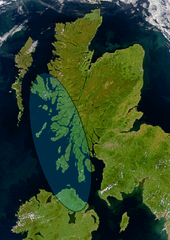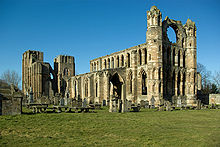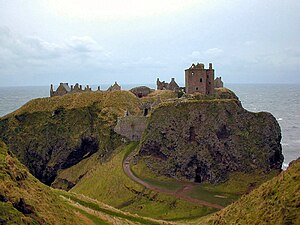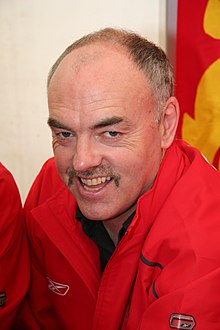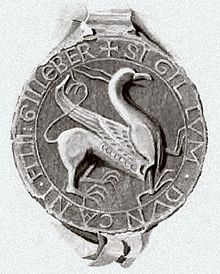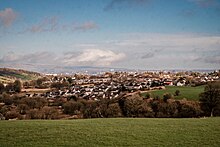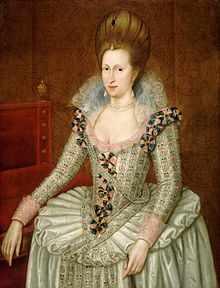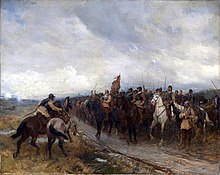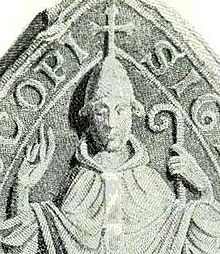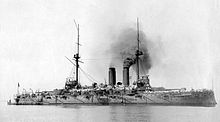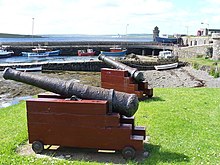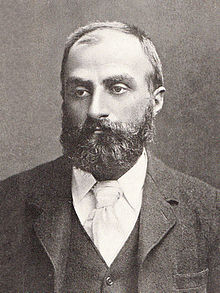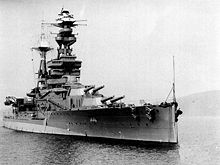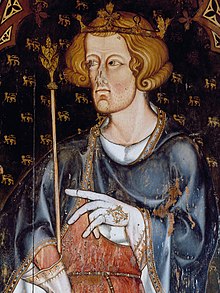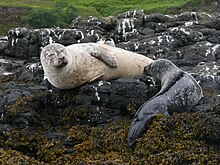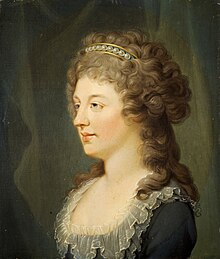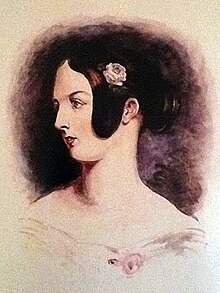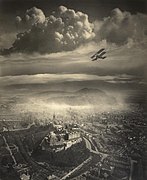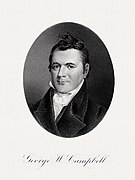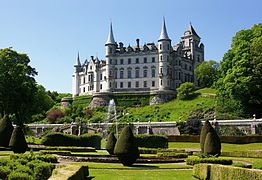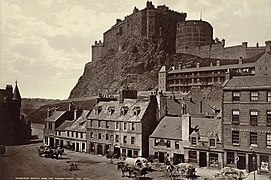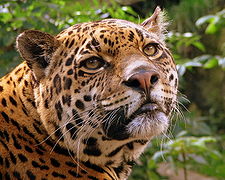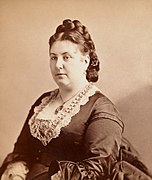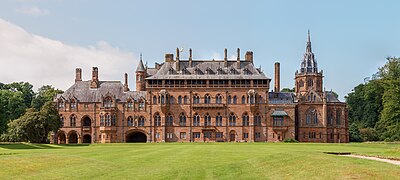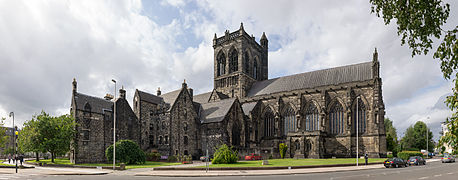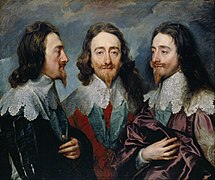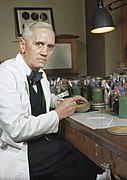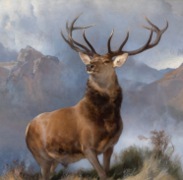Portal:Scotland/Featured
The Scotland Portal
View from An Teallach
| Main Page | Selected articles 1 | Selected articles 2 | Selected biographies | Selected quotes | Selected pictures | Featured Content | Categories & Topics |
Selection of featured articles
Selection of good articles

The Clydesdale is a Scottish breed of draught horse. It takes its name from Clydesdale, a region of Scotland centred on the River Clyde.
The origins of the breed lie in the seventeenth century, when Flemish stallions were imported to Scotland and mated with local mares; in the nineteenth century, Shire blood was introduced. The first recorded use of the name "Clydesdale" for the breed was in 1826; the horses spread through much of Scotland and into northern England. After the breed society was formed in 1877, thousands of Clydesdales were exported to many countries of the world, particularly to Australia and New Zealand. In the early twentieth century numbers began to fall, both because many were taken for use in the First World War, and because of the increasing mechanisation of agriculture. By the 1970s, the Rare Breeds Survival Trust considered the breed vulnerable to extinction. Numbers have since increased slightly. (Full article...)
On 2 July 2018, six-year-old Scottish girl Alesha Sarah MacPhail was abducted from her bed and murdered by 16-year-old Aaron Campbell. Alesha, from Airdrie, North Lanarkshire, was three days into a stay with her grandparents on the Isle of Bute when Campbell entered their unlocked home at approximately 02:00 AM. The teenager had previously bought cannabis from Alesha's father Robert, who lived in the house, and initially went to steal the drug. Upon finding the child asleep, Campbell picked her up, carried her to the grounds of a demolished hotel, then raped and killed her by applying pressure to her face and neck. Alesha was reported missing at 06:23 GMT; her body was discovered by a member of the public at 08:54 GMT.
Police Scotland charged Campbell with abduction, rape and murder on 5 July 2018. He denied any involvement and pleaded "not guilty" when his trial began on 11 February 2019. He logged a "special defence of incrimination" by claiming that Robert's girlfriend, Toni McLachlan, was responsible for murdering the child and framing him. Campbell was tied to the crime by CCTV footage, DNA, and fibres from his clothing, and the jury returned a guilty verdict after three hours of deliberation. A ban on publicly naming Campbell was lifted following his conviction. On 21 March 2019, he was handed a life sentence with a minimum term of 27 years; subsequently reduced to 24 years on appeal. He confessed to the crime before his sentencing, adding that he was "quite satisfied with the murder". (Full article...)
Police Scotland charged Campbell with abduction, rape and murder on 5 July 2018. He denied any involvement and pleaded "not guilty" when his trial began on 11 February 2019. He logged a "special defence of incrimination" by claiming that Robert's girlfriend, Toni McLachlan, was responsible for murdering the child and framing him. Campbell was tied to the crime by CCTV footage, DNA, and fibres from his clothing, and the jury returned a guilty verdict after three hours of deliberation. A ban on publicly naming Campbell was lifted following his conviction. On 21 March 2019, he was handed a life sentence with a minimum term of 27 years; subsequently reduced to 24 years on appeal. He confessed to the crime before his sentencing, adding that he was "quite satisfied with the murder". (Full article...)
Meantime is a 2022 crime fiction novel by the Scottish comedian Frankie Boyle. The story follows drug addict Felix McAveety's unfocused investigation into his friend Marina's death. It is set in Glasgow, Scotland, shortly after the 2014 independence referendum. Felix is aided by the crime fiction writer Jane, the left-wing activist Amy and his depressed neighbour Donnie. They meet Chong, who seems to believe reality is simulated, and find signs that British Intelligence are involved in Marina's death.
Though he had written non-fiction before, Meantime was Boyle's first novel; he wrote parts of the novel in hotels after stand-up performances and while wandering his hometown Glasgow. The book was published by Baskerville, a new crime fiction imprint of John Murray, on 21 July 2022. It was nominated for Bloody Scotland's Debut of the Year award. (Full article...)
Though he had written non-fiction before, Meantime was Boyle's first novel; he wrote parts of the novel in hotels after stand-up performances and while wandering his hometown Glasgow. The book was published by Baskerville, a new crime fiction imprint of John Murray, on 21 July 2022. It was nominated for Bloody Scotland's Debut of the Year award. (Full article...)
}
'"`UNIQ--templatestyles-00000062-QINU`"'
'"`UNIQ--references-00000063-QINU`"'
Source: (Full article...)
'"`UNIQ--templatestyles-00000062-QINU`"'
'"`UNIQ--references-00000063-QINU`"'
Source: (Full article...)

The flora of Scotland is an assemblage of native plant species including over 1,600 vascular plants, more than 1,500 lichens and nearly 1,000 bryophytes. The total number of vascular species is low by world standards but lichens and bryophytes are abundant and the latter form a population of global importance. Various populations of rare fern exist, although the impact of 19th-century collectors threatened the existence of several species. The flora is generally typical of the north-west European part of the Palearctic realm and prominent features of the Scottish flora include boreal Caledonian forest (much reduced from its natural extent), heather moorland and coastal machair. In addition to the native species of vascular plants there are numerous non-native introductions, now believed to make up some 43% of the species in the country.
There are a variety of important trees species and specimens; a Grand Fir in Argyll is the tallest tree in the United Kingdom and the Fortingall Yew may be the oldest tree in Europe. The Arran Whitebeams, Shetland Mouse-ear and Scottish Primrose are endemic flowering plants and there are a variety of endemic mosses and lichens. Conservation of the natural environment is well developed and various organisations play an important role in the stewardship of the country's flora. Numerous references to the country's flora appear in folklore, song and poetry. (Full article...)
Jarlshof (/ˈjɑːrlzhɒf/ YARLZ-hof) is the best-known prehistoric archaeological site in Shetland, Scotland. It lies in Sumburgh, Mainland, Shetland and has been described as "one of the most remarkable archaeological sites ever excavated in the British Isles". It contains remains dating from 2500 BC up to the 17th century AD.
The Bronze Age settlers left evidence of several small oval houses with thick stone walls and various artefacts including a decorated bone object. The Iron Age ruins include several different types of structures, including a broch and a defensive wall around the site. The Pictish period provides various works of art including a painted pebble and a symbol stone. The Viking Age ruins make up the largest such site visible anywhere in Britain and include a longhouse; excavations provided numerous tools and a detailed insight into life in Shetland at this time. The most visible structures on the site are the walls of the Scottish period fortified manor house, which inspired the name "Jarlshof" that first appears in an 1821 novel by Walter Scott. (Full article...)
Sir Andrew Dudley, KG (c. 1507 – 1559) was an English soldier, courtier, and diplomat. A younger brother of John Dudley, 1st Duke of Northumberland, he served in Henry VIII's navy and obtained court offices under Edward VI. In 1547–1548 he acted as admiral of the fleet and participated in the War of the Rough Wooing in Scotland, where he commanded the English garrison of Broughty Castle. He was appointed captain of the fortress of Guînes in the Pale of Calais in late 1551. There he got involved in a dispute with the Lord Deputy of Calais, which ended only when both men were replaced in October 1552.
In October 1549 Andrew Dudley became one of Edward VI's Chief Gentlemen of the Privy Chamber and later keeper of the Palace of Westminster, in which function he was responsible for the Royal Wardrobe and Privy Purse. In early 1553 he was sent on a diplomatic mission to the Emperor Charles V to suggest peace talks between France and the Empire. Andrew Dudley was bethrothed to Margaret Clifford, a first cousin of Lady Jane Grey, in June 1553; yet his marriage plans came to naught with the accession of Mary I, and on 19 August 1553 he was condemned to death for his part in his brother's attempt to establish Lady Jane on the English throne. Released in January 1555, he lived in London until his death in 1559. (Full article...)
Royal Air Force Machrihanish or RAF Machrihanish (formerly ICAO: EGQJ) is a former Royal Air Force station located near the town of Machrihanish and 3.5 miles (5.6 km) west of Campbeltown, at the tip of the Kintyre peninsula, Argyll and Bute, in Scotland.
Two airfields known as Machrihanish have existed, the first was operational during the First World War and was used by the Royal Naval Air Service and RAF, before closing at the end of the Second World War. A second airfield, which was constructed during the Second World War, was used extensively by the Fleet Air Arm during the war. During the 1960s, it was redeveloped and became an RAF station and was made available to the US Navy as a nuclear weapons store and base for components of the US Navy SEALs Naval Special Warfare Group 2. (Full article...)
Mary Scott Hogarth (26 October 1819 – 7 May 1837) was the sister of Catherine Dickens (née Hogarth) and the sister-in-law of Charles Dickens. Hogarth first met Charles Dickens at age 14, and after Dickens married Hogarth's sister Catherine, Mary lived with the couple for a year. Hogarth died suddenly in 1837, which caused Dickens to miss the publication dates for two novels: The Pickwick Papers and Oliver Twist. Hogarth later became the inspiration for a number of characters in Dickens novels, including Rose Maylie in Oliver Twist and Little Nell in The Old Curiosity Shop. Charles and Catherine Dickens' first daughter was named Mary in her memory. (Full article...)
The recorded history of Scotland begins with the arrival of the Roman Empire in the 1st century, when the province of Britannia reached as far north as the Antonine Wall. North of this was Caledonia, inhabited by the Picti, whose uprisings forced Rome's legions back to Hadrian's Wall. As Rome finally withdrew from Britain, a Gaelic tribe from Ireland called the Scoti began colonising Western Scotland and Wales. Before Roman times, prehistoric Scotland entered the Neolithic Era about 4000 BC, the Bronze Age about 2000 BC, and the Iron Age around 700 BC.
The Gaelic kingdom of Dál Riata was founded on the west coast of Scotland in the 6th century. In the following century, Irish missionaries introduced the previously pagan Picts to Celtic Christianity. Following England's Gregorian mission, the Pictish king Nechtan chose to abolish most Celtic practices in favour of the Roman rite, restricting Gaelic influence on his kingdom and avoiding war with Anglian Northumbria. Towards the end of the 8th century, the Viking invasions began, forcing the Picts and Gaels to cease their historic hostility to each other and to unite in the 9th century, forming the Kingdom of Scotland. (Full article...)
The Gaelic kingdom of Dál Riata was founded on the west coast of Scotland in the 6th century. In the following century, Irish missionaries introduced the previously pagan Picts to Celtic Christianity. Following England's Gregorian mission, the Pictish king Nechtan chose to abolish most Celtic practices in favour of the Roman rite, restricting Gaelic influence on his kingdom and avoiding war with Anglian Northumbria. Towards the end of the 8th century, the Viking invasions began, forcing the Picts and Gaels to cease their historic hostility to each other and to unite in the 9th century, forming the Kingdom of Scotland. (Full article...)
Aberdour Castle is in the village of Easter Aberdour, Fife, Scotland. Parts of the castle date from around 1200, making Aberdour one of the two oldest datable standing castles in Scotland, along with Castle Sween in Argyll, which was built at around the same time.
The earliest part of the castle was a modest hall house, on a site overlooking the Dour Burn. Over the next 400 years, the castle was successively expanded according to contemporary architectural ideas. The hall house became a tower house in the 15th century, and was extended twice in the 16th century. The final addition was made around 1635, with refined Renaissance details, and the whole was complemented by a walled garden to the east and terraced gardens to the south. The terraces, dating from the mid-16th century, form one of the oldest gardens in Scotland, and offer extensive views across the Firth of Forth to Edinburgh. (Full article...)
Richard Madden (born 18 June 1986) is a Scottish actor. He was cast in his first role at age 11 and made his screen acting debut in 2000. He later began performing on stage whilst a student at the Royal Conservatoire of Scotland. In 2007, he toured with Shakespeare's Globe company as Romeo in Romeo and Juliet, a role he reprised in the West End in 2016. Madden rose to fame with his portrayal of Robb Stark in the fantasy drama series Game of Thrones from 2011 to 2013.
Madden subsequently played Prince Kit in the romantic fantasy film Cinderella (2015) and Italian banker Cosimo de' Medici in the first season of the historical fiction series Medici (2016). In 2018, he gained acclaim for his performance as a police officer in the thriller series Bodyguard, for which he won a Golden Globe Award. The following year, Madden was named one of the 100 most influential people in the world by Time, and he had supporting roles as music manager John Reid in the biopic Rocketman and a soldier in the war film 1917. He has since starred as Ikaris in the Marvel Cinematic Universe superhero film Eternals (2021) and as a spy in the action thriller series Citadel (2023–present). (Full article...)
James Curran Baxter (29 September 1939 – 14 April 2001) was a Scottish professional footballer who played as a left half. He is generally regarded as one of the country's greatest ever players. He was born, educated and started his career in Fife, but his peak playing years were in the early 1960s with the Glasgow club Rangers, whom he helped to win ten trophies between 1960 and 1965, and where he became known as "Slim Jim". However, he started drinking heavily during a four-month layoff caused by a leg fracture in December 1964, his fitness suffered, and he was transferred to Sunderland in summer 1965. In two and a half years at Sunderland he played 98 games and scored 12 goals, becoming known for drinking himself unconscious the night before a match and playing well the next day. At the end of 1967 Sunderland transferred him to Nottingham Forest, who gave him a free transfer back to Rangers in 1969 after 50 games. After a further year with Rangers Baxter retired from football in 1970, at the age of 31.
From 1960 to 1967, he was a leading member of a strong Scottish international team that lost only once to England, in 1966, shortly after he recovered from the leg fracture. He thought his best international performance was a 2–1 win against England in 1963, when he scored both goals after Scotland were reduced to 10 players. In the 1967 match against England, who had won the 1966 World Cup, he taunted the opposition by ball juggling while waiting for his teammates to find good positions. Although he was given most of the credit for the 3–2 win, some commentators wished he had made an effort to run up a bigger score. (Full article...)
From 1960 to 1967, he was a leading member of a strong Scottish international team that lost only once to England, in 1966, shortly after he recovered from the leg fracture. He thought his best international performance was a 2–1 win against England in 1963, when he scored both goals after Scotland were reduced to 10 players. In the 1967 match against England, who had won the 1966 World Cup, he taunted the opposition by ball juggling while waiting for his teammates to find good positions. Although he was given most of the credit for the 3–2 win, some commentators wished he had made an effort to run up a bigger score. (Full article...)
"One Kiss" is a song by Scottish DJ and record producer Calvin Harris and English-Albanian singer Dua Lipa. The song was released for digital download and streaming as a standalone single, through Columbia Records and Sony Music on 6 April 2018. It was later included on Dua Lipa: Complete Edition (2018), the super deluxe reissue of Lipa's eponymous debut studio album. The song was written by Harris and Lipa alongside Canadian singer Jessie Reyez, with Harris solely handling the production. It is a dance-pop, diva house and tropical house song with 1990s, electro house, Eurodance, funky disco, funk house, psychedelic electropop and UK garage elements. Horns, organs, and a synth-line are featured within the song, as well as house beats. Lyrically, the song is about instantly falling in love with a romantical interest after a kiss.
Music critics praised the throwback sound of "One Kiss" as well as its summertime aesthetic. The song won the Brit Award for British Single of the Year at the 2019 Brit Awards. It appeared on year-end lists by numerous publications including Billboard, The Guardian and Time Out. The song spent eight weeks atop the UK Singles Chart, standing as both's longest running number one single in the country. It further peaked in the same spot of charts in 32 other countries, including Germany, Ireland and the Netherlands. The song has since been certified multi-platinum in 13 countries, including Diamond in France, Mexico, and Poland, as well as a quintuple platinum in the UK. It was the biggest song of 2018 in the UK, as well as in the Netherlands and in the Flanders region of Belgium. (Full article...)
Music critics praised the throwback sound of "One Kiss" as well as its summertime aesthetic. The song won the Brit Award for British Single of the Year at the 2019 Brit Awards. It appeared on year-end lists by numerous publications including Billboard, The Guardian and Time Out. The song spent eight weeks atop the UK Singles Chart, standing as both's longest running number one single in the country. It further peaked in the same spot of charts in 32 other countries, including Germany, Ireland and the Netherlands. The song has since been certified multi-platinum in 13 countries, including Diamond in France, Mexico, and Poland, as well as a quintuple platinum in the UK. It was the biggest song of 2018 in the UK, as well as in the Netherlands and in the Flanders region of Belgium. (Full article...)

The Battle of Kinghorn was fought on 6 August 1332 at Wester Kinghorn (now Burntisland), Fife, Scotland. An invading seaborne force of 1,500 men was commanded by Edward Balliol and Henry Beaumont, Earl of Buchan. A Scottish army, possibly 4,000 strong, commanded by Duncan, Earl of Fife, and Robert Bruce, Lord of Liddesdale (an illegitimate son of King Robert the Bruce) was defeated with heavy loss. Balliol was the son of King John Balliol and was attempting to make good his claim to be the rightful king of Scotland. He hoped that many of the Scots would desert to him.
Balliol and Beaumont's forces were still disembarking from their ships when the Scots attacked them. The Scots pressed hard, but were beaten off by English longbowmen and some supporting infantry even before Balliol's men-at-arms could get ashore. The Scottish losses are disputed, but included several nobles. The invaders fought the main Scottish army five days later at the Battle of Dupplin Moor and inflicted a crushing defeat. Balliol was crowned king of Scotland on 24 September. (Full article...)

The Fairy Flag (Scottish Gaelic: Am Bratach Sìth) is an heirloom of the chiefs of Clan MacLeod. It is held in Dunvegan Castle along with other notable heirlooms, such as the Dunvegan Cup and Sir Rory Mor's Horn. The flag is made of silk, is yellow or brown in colour, and is a square of side about 18 inches (45 centimetres). It has been examined numerous times in the last two centuries, and its condition has somewhat deteriorated. It is ripped and tattered, and is considered to be extremely fragile. The flag is covered in small red "elf dots". In the early part of the 19th century, the flag was also marked with small crosses, but these have since disappeared. The silk of the flag has been stated to have originated in the Far East, and was therefore extremely precious, which led some to believe that the flag may have been an important relic of some sort. Others have attempted to associate the flag with the Crusades or even a raven banner, which was said to have been used by various Viking leaders in the British Isles.
There are numerous traditions and stories associated with the flag, most of which deal with its magical properties and mysterious origins. The flag is variously said to have originated as a gift from the fairies to an infant chieftain, as a gift to a chief from a departing fairy-lover, and as a reward for defeating an evil spirit. The various powers attributed to the Fairy Flag include: the ability to multiply a clan's military forces; the ability to save the lives of certain clanfolk; the ability to cure a plague on cattle; the ability to increase the chances of fertility; and the ability to bring herring into the loch at Dunvegan. Some traditions relate that if the flag were to be unfurled and waved more than three times, it would either vanish, or lose its powers forever. (Full article...)
Jessie Stephen, MBE (19 April 1893 – 12 June 1979) was a twentieth-century British suffragette, labour activist and local councillor. She grew up in Scotland and won a scholarship to train as a teacher. Family finances dictated otherwise, leading to her becoming a domestic worker at the age of 15. She became involved in national labour issues as a teenager, via organisations such as the Independent Labour Party and the Women's Social and Political Union. Stephen moved to London during World War I and in the 1920s she toured the United States and Canada, where she held meetings with the public including migrant English domestic workers.
Stephen was elected as a local councillor several times and stood as a candidate in general elections. After moving to Bristol in the 1940s she became the first woman president of Bristol Trades Council. She was appointed MBE in 1977 and her life is commemorated by a blue plaque in Bristol. (Full article...)
How the Scots Invented the Modern World: The True Story of How Western Europe's Poorest Nation Created Our World & Everything in It (or The Scottish Enlightenment: The Scots invention of the Modern World) is a non-fiction book written by American historian Arthur Herman. The book examines the origins of the Scottish Enlightenment and what impact it had on the modern world. Herman focuses principally on individuals, presenting their biographies in the context of their individual fields and also in terms of the theme of Scottish contributions to the world.
The book was published as a hardcover in November 2001 by Crown Publishing Group and as a trade paperback in September 2002. Critics found the thesis to be over-reaching but descriptive of the Scots' disproportionate impact on modernity. In the American market, the trade paperback peaked at #3 on The Washington Post bestseller list, while in the Canadian market it peaked at #1. (Full article...)
The book was published as a hardcover in November 2001 by Crown Publishing Group and as a trade paperback in September 2002. Critics found the thesis to be over-reaching but descriptive of the Scots' disproportionate impact on modernity. In the American market, the trade paperback peaked at #3 on The Washington Post bestseller list, while in the Canadian market it peaked at #1. (Full article...)

Scottish art is the body of visual art made in what is now Scotland, or about Scottish subjects, since prehistoric times. It forms a distinctive tradition within European art, but the political union with England has led its partial subsumation in British art.
The earliest examples of art from what is now Scotland are highly decorated carved stone balls from the Neolithic period. From the Bronze Age there are examples of carvings, including the first representations of objects, and cup and ring marks. More extensive Scottish examples of patterned objects and gold work are found the Iron Age. Elaborately carved Pictish stones and impressive metalwork emerged in Scotland the early Middle Ages. The development of a common style of Insular art across Great Britain and Ireland influenced elaborate jewellery and illuminated manuscripts such as the Book of Kells. Only isolated examples survive of native artwork from the late Middle Ages and of works created or strongly influenced by artists of Flemish origin. The influence of the Renaissance can be seen in stone carving and painting from the fifteenth century. In the sixteenth century the crown began to employ Flemish court painters who have left a portrait record of royalty. The Reformation removed a major source of patronage for art and limited the level of public display, but may have helped in the growth of secular domestic forms, particularly elaborate painting of roofs and walls. Although the loss of the court as a result of the Union of Crowns in 1603 removed another major source of patronage, the seventeenth century saw the emergence of the first significant native artists for whom names are extant, with figures such as George Jamesone and John Michael Wright. (Full article...)
The 2007 Scottish Challenge Cup final was an association football match between Dunfermline Athletic and St Johnstone, held on 25 November 2007 at Dens Park in Dundee. It was the 17th final of the Scottish Challenge Cup since it was first organised in 1990 to celebrate the centenary of the Scottish Football League.
St Johnstone progressed through four knock-out rounds to reach the final whilst Dunfermline Athletic contested only three after receiving a random bye into the second round. The 2007 final was Dunfermline's second appearance in a cup final in six months, having lost the 2007 Scottish Cup final, although it was the club's first Challenge Cup final. The match was St Johnstone's second appearance in the final of the tournament having lost in 1996. The tournament was contested by clubs below the Scottish Premier League, with both clubs in the final coming from the First Division. (Full article...)
St Johnstone progressed through four knock-out rounds to reach the final whilst Dunfermline Athletic contested only three after receiving a random bye into the second round. The 2007 final was Dunfermline's second appearance in a cup final in six months, having lost the 2007 Scottish Cup final, although it was the club's first Challenge Cup final. The match was St Johnstone's second appearance in the final of the tournament having lost in 1996. The tournament was contested by clubs below the Scottish Premier League, with both clubs in the final coming from the First Division. (Full article...)
"Loch Henry" is the second episode of the sixth series of the anthology series Black Mirror. It was written by the series creator Charlie Brooker and directed by Sam Miller. Alongside the rest of the sixth series, it premiered on Netflix on 15 June 2023. The episode follows Davis (Samuel Blenkin) and Pia (Myha'la Herrold) as they make a true crime documentary in Davis's run-down hometown in Scotland.
Brooker reflected on the cinematic style of true crime documentaries and how he and his wife had considered traveling to Scotland after seeing its depiction in a documentary. "Loch Henry" was the first episode set in Scotland, as the setting of "Crocodile" was changed to Iceland; 18 locations in Scotland were used for filming. The episode criticises the effects of true crime media on victims. Pia's death can be seen as punishment for her flippant attitude towards other people's tragedies. The episode references other Black Mirror events through newspapers and other text; its themes were compared to "Joan Is Awful", which is also about streaming television. (Full article...)
Brooker reflected on the cinematic style of true crime documentaries and how he and his wife had considered traveling to Scotland after seeing its depiction in a documentary. "Loch Henry" was the first episode set in Scotland, as the setting of "Crocodile" was changed to Iceland; 18 locations in Scotland were used for filming. The episode criticises the effects of true crime media on victims. Pia's death can be seen as punishment for her flippant attitude towards other people's tragedies. The episode references other Black Mirror events through newspapers and other text; its themes were compared to "Joan Is Awful", which is also about streaming television. (Full article...)
Between the 1930s and 1970s, the Scottish football club Rangers had an unwritten rule whereby the club would not knowingly sign any player who was a Roman Catholic. This was because Rangers were viewed as a Protestant, Unionist club, in contrast to their Old Firm rivals, Celtic who were viewed as an Irish Catholic club, although Celtic never adopted a discriminatory signing policy. Rangers' policy was ended in 1989 when they signed ex-Celtic striker Mo Johnston, under manager Graeme Souness. (Full article...)
Lists of featured content
| This is a list of recognized content, updated weekly by JL-Bot (talk · contribs) (typically on Saturdays). There is no need to edit the list yourself. If an article is missing from the list, make sure it is tagged (e.g. {{WikiProject Scotland}}) or categorized correctly and wait for the next update. See WP:RECOG for configuration options. |
Featured articles
- Áedán mac Gabráin
- Anglo-Scottish war (1650–1652)
- Anne, Queen of Great Britain
- Anne of Denmark
- HMS Argus (I49)
- Japanese battleship Asahi
- Battle of Blenheim
- Blue men of the Minch
- William Bruce (architect)
- William Speirs Bruce
- Burke and Hare murders
- Burnt Candlemas
- Constantine II of Scotland
- Cullen House
- David I of Scotland
- Walter Donaldson (snooker player)
- Donnchadh, Earl of Carrick
- Alec Douglas-Home
- Battle of Dunbar (1650)
- Edward I of England
- Elgin Cathedral
- Queen Elizabeth The Queen Mother
- Fauna of Scotland
- From the Doctor to My Son Thomas
- Rachel Chiesley, Lady Grange
- Margaret Macpherson Grant
- Great North of Scotland Railway
- Bryan Gunn
- Battle of Halidon Hill
- HMS Hood
- Battle of Inverkeithing
- James II of England
- James VI and I
- Jocelin of Glasgow
- Kelpie
- John Knox
- Elizabeth Maitland, Duchess of Lauderdale
- Gregor MacGregor
- Mary, Queen of Scots
- Murray Maxwell
- William McGregor (football)
- Nebula Science Fiction
- Neilston
- Nuckelavee
- Order of the Thistle
- Pitfour estate
- HMS Ramillies (07)
- Renewable energy in Scotland
- Representative peer
- HMS Royal Oak (08)
- Scotland in the High Middle Ages
- Scotland national football team
- Scottish National Antarctic Expedition
- Shapinsay
- Isle of Skye
- Charlotte Stuart, Duchess of Albany
- HMS Vanguard (23)
- Second War of Scottish Independence
- John Wark
- Westminster Assembly
- John Michael Wright
Former featured articles
Good articles
- A82 road
- 2001 Scottish Masters
- 2002 Scottish Masters
- 2014 Scottish Labour leadership election
- 2022 Aberdeen City Council election
- 2022 Aberdeenshire Council election
- 2022 Angus Council election
- 2022 Argyll and Bute Council election
- 2022 Clackmannanshire Council election
- 2022 East Ayrshire Council election
- 2022 Glasgow City Council election
- 2022 North Ayrshire Council election
- 2022 South Ayrshire Council election
- 2022 South Lanarkshire Council election
- Aberdeen F.C.
- Aberdeen F.C.–Rangers F.C. rivalry
- Aberdour Castle
- William Adam (architect)
- Arbroath
- Architecture of Scotland
- Architecture in early modern Scotland
- Architecture in modern Scotland
- Architecture of Scotland in the Industrial Revolution
- Architecture of Scotland in the Middle Ages
- Architecture of Scotland in the Roman era
- Architecture of Scotland in the prehistoric era
- Isle of Arran
- Art in Medieval Scotland
- Art in early modern Scotland
- Art in modern Scotland
- James Balfour (died 1845)
- John Barrowman
- Battle of Barry
- Jim Baxter
- Ian Begg (architect)
- Ben Nevis
- Lewis Benson (boxer)
- Guy Berryman
- The Bhoys from Seville
- Billy Boys
- The Black Island
- HMS Bonaventure (31)
- Boobrie
- Eilley Bowers
- Bill Bowman (Scottish politician)
- British people
- Gordon Brown
- Brownie (folklore)
- Alexander Buchan (artist)
- Calendar (New Style) Act 1750
- James Campbell (British Army officer, died 1745)
- Camus Cross
- Thomas Carlyle
- Castles in Scotland
- Celtic F.C. in European football
- Celtic Park
- Erik Chisholm
- Church architecture in Scotland
- Winston Churchill
- Clan Maclachlan
- Clydesdale horse
- HMS Conqueror (1911)
- The Cookery Book of Lady Clark of Tillypronie
- Coxton Tower
- Craigiehall
- Lord Ninian Crichton-Stuart
- Cruachan Power Station
- Cullen Old Church
- 1966 European Cup Winners' Cup final
- The Daily Mash
- Dandie Dinmont Terrier
- Ruth Davidson
- Demographic history of Scotland
- Paul Dickov
- Mary Docherty
- Donkey Punch (novel)
- Doune Castle
- Dowhill Castle
- Dubh Artach
- Andrew Dudley
- Duncraig Castle
- Dunnottar Castle
- Dunrobin Castle
- Dunstaffnage Castle
- East Kirkton Quarry
- East Stirlingshire F.C.
- Easter Road
- Economy of Scotland in the Middle Ages
- Economy of Scotland in the early modern period
- Edinburgh Castle
- University of Edinburgh
- Edinburgh Zoo
- Education in Medieval Scotland
- Education in early modern Scotland
- Edzell Castle
- Eenoolooapik
- Eidyn
- Elcho Castle
- English invasion of Scotland (1400)
- Eriskay Pony
- Estate houses in Scotland
- 1884 FA Cup final
- Edward G. Faile
- Fairy Flag
- Falkirk Wheel
- Family in early modern Scotland
- James Ferguson, Lord Pitfour
- James Ferguson (Scottish politician)
- Finnieston Crane
- Flag of Scotland
- Flora of Scotland
- Sir Ewan Forbes, 11th Baronet
- Forglen House
- Forth Bridge
- Forth Valley Royal Hospital
- Dario Franchitti
- Château Gaillard
- Ryan Gauld
- Geography of Scotland in the Middle Ages
- Geography of Scotland in the early modern era
- Geology of Scotland
- Giffnock
- Gilli (Hebridean earl)
- Glass Swords
- The Glenlivet distillery
- Glenrothes
- Glorious Revolution in Scotland
- Government in early modern Scotland
- Government in medieval Scotland
- Isobel Gowdie
- Grey Gowrie
- John Gregorson Campbell
- Hampden Park
- Hibernian F.C.
- Highland cattle
- Highlands and Islands Alliance
- Lists of mountains and hills in the British Isles
- Hillforts in Scotland
- History of Scotland
- History of agriculture in Scotland
- Mary Hogarth
- Housing in Scotland
- How the Scots Invented the Modern World
- Leslie Hunter
- HMS Hurst Castle
- Ibrox Stadium
- 1902 Ibrox disaster
- Illieston House
- Inchdrewer Castle
- Inner Hebrides
- James Innes (British Army officer, died 1759)
- Charles Irving (surgeon)
- Islands of the Clyde
- Islay
- James I of Scotland
- Bert Jansch
- Jarlshof
- Jocky Wilson Cup
- Kelvin Scottish
- Battle of Kinghorn
- Kirkandrews, Dumfries and Galloway
- Kirkcaldy
- Kirkcudbright Tolbooth
- Labour Party of Scotland
- Johann Lamont
- Landscape painting in Scotland
- Billy Liddell
- Literature in early modern Scotland
- Kim Little
- Loch Arkaig treasure
- Loch Henry
- Lochleven Castle
- RAF Lossiemouth
- Murder of Alesha MacPhail
- Clan MacAulay
- Doris Mackinnon
- Sorley MacLean
- Richard Madden
- SS Manasoo
- James Clerk Maxwell
- Maybole Castle
- James McAvoy
- Stuart McCall
- Angus McDonald (Virginia militiaman)
- McEwan's
- Ewan McGregor
- John George McTavish
- Johnny McNichol
- Meantime (book)
- Mingulay
- Colin Mitchell
- Michelle Mone, Baroness Mone
- Monifieth
- William Montgomerie
- James Murray, Lord Philiphaugh
- Music in early modern Scotland
- John Mylne (died 1667)
- The National (Scotland)
- John Ogilby
- One Kiss
- Orkney
- Outer Hebrides
- Paisley witches
- Papa Stour
- Partick Thistle F.C.
- Portrait painting in Scotland
- Potion (song)
- Prehistoric art in Scotland
- Raasay
- RAF Machrihanish
- Ragnall ua Ímair
- Alex Raisbeck
- Rangers F.C. signing policy
- Renaissance in Scotland
- Richard Rennison
- Rockstar Dundee
- Romanticism in Scotland
- Andrew Ross (rugby union, born 1879)
- Royal Banner of Scotland
- Rusco Tower
- St Margaret's Church, Aberlour
- St Peter's Roman Catholic Church, Buckie
- St Rufus Church
- Scandinavian Scotland
- Schiehallion experiment
- Scotland during the Roman Empire
- Scotland in the Middle Ages
- Scotland in the early modern period
- Scotland in the late Middle Ages
- Scotland in the modern era
- Scotland national football team manager
- Scotland under the Commonwealth
- Scottish art
- 1999 Scottish Challenge Cup final
- 2002 Scottish Challenge Cup final
- 2007 Scottish Challenge Cup final
- Scottish Challenge Cup
- 1873–74 Scottish Cup
- 2012 Scottish Cup final
- 2019 Scottish Open (snooker)
- 1971 Scottish soldiers' killings
- Scottish Terrier
- Scottish art in the eighteenth century
- Scottish art in the nineteenth century
- Scottish religion in the eighteenth century
- Scottish religion in the seventeenth century
- Scottish society in the Middle Ages
- Scottish society in the early modern era
- Scuttling of the German fleet at Scapa Flow
- Sea Mither
- Bill Shankly
- Shetland
- Shieling
- Sieges of Berwick (1355 and 1356)
- Ian Smith (rugby union, born 1903)
- Jimmy Speirs
- Staffa
- Jessie Stephen
- Alexander Stoddart
- Stoor worm
- John Struthers (anatomist)
- Charles Edward Stuart
- Sundrum Castle
- Philipp Tanzer
- Tay Whale
- D'Arcy Wentworth Thompson
- Thurso
- Tibbers Castle
- Titan Clydebank
- Torf-Einarr
- Tradeston Flour Mills explosion
- Trident (UK nuclear programme)
- USS Tucker (DD-374)
- German submarine U-27 (1936)
- Urquhart Castle
- James Walker (Australian politician)
- James Walker (Royal Navy officer)
- William Middleton Wallace
- Warfare in Medieval Scotland
- Warfare in early modern Scotland
- Water bull
- West Highland White Terrier
- Robert White (Virginia physician)
- Krysty Wilson-Cairns
- Witch trials in early modern Scotland
- Andrew Wodrow
- Women in early modern Scotland
Former good articles
- Alexander Bain (inventor)
- Billy Bremner
- William Buchanan (locomotive designer)
- Canadian Gaelic
- Andrew Carnegie
- Carnoustie
- Coatbridge
- Catherine Cranston
- Arthur Conan Doyle
- Dundee United F.C.
- Steve Evans (footballer, born 1962)
- Evanton
- Forth Road Bridge
- Glasgow
- Glasgow, Paisley, Kilmarnock and Ayr Railway
- University of Glasgow
- Frank Hadden
- Halloween
- David Hume
- Jordanhill railway station
- Deborah Kerr
- Lothian Buses
- Gillian McKeith
- Andy Murray
- Picts
- Scotland
- Scots language
- Still Game
- Alec Sutherland
- Tay Bridge
- Treasure Island
- William Morrison (chemist)
Featured lists
- List of islands of Scotland
- List of Celtic F.C. managers
- List of Scottish Football League clubs
- List of Scotland international footballers
- List of Scotland ODI cricketers
- List of Scotland national football team hat-tricks
- List of Scottish football champions
- List of Scottish football clubs in the FA Cup
- PFA Scotland Players' Player of the Year
- SFWA Footballer of the Year
- Scotland national football team results (1872–1914)
- Timeline of prehistoric Scotland
- Timeline of Scottish football
Featured pictures
-
13-06-07 RaR Biffy Clyro Simon Neil 02
-
Aerial View of Edinburgh, by Alfred Buckham, from about 1920
-
Arthur-James-Balfour-1st-Earl-of-Balfour
-
CAMPBELL, George W-Treasury (BEP engraved portrait)
-
Charles Robert Leslie - Sir Walter Scott - Ravenswood and Lucy at the Mermaiden's Well - Bride of Lammermoor
-
Common seal (Phoca vitulina) 2
-
Dalziel Brothers - Sir Walter Scott - The Talisman - Sir Kenneth before the King
-
Daniel Craig McCallum by The Brady National Photographic Art Gallery
-
David Livingstone by Thomas Annan
-
Dunrobin Castle -Sutherland -Scotland-26May2008 (2)
-
Edinburgh Castle from Grass Market
-
Eilean Donan Castle, Scotland - Jan 2011
-
Falkirk Wheel Timelapse, Scotland - Diliff
-
FalkirkWheelSide 2004 SeanMcClean
-
Gavin Hamilton - Coriolanus Act V, Scene III edit2
-
Jaguar at Edinburgh Zoo
-
Jeremiah Gurney - Photograph of Euphrosyne Parepa-Rosa
-
Loch Torridon, Scotland
-
Mount Stuart House 2018-08-25
-
N. M. Price - Sir Walter Scott - Guy Mannering - At the Kaim of Derncleugh
-
NEWScotland-2016-Aerial-Blackness Castle 01
-
Nils Olav inspects the Kings Guard of Norway after being bestowed with a knighthood at Edinburgh Zoo in Scotland
-
Paisley Abbey Interior East
-
Paisley Abbey from the south east
-
Prince James Francis Edward Stuart by Alexis Simon Belle
-
Robert William Thomson - Illustrated London News March 29 1873
-
Scotland-2016-West Lothian-Hopetoun House 02
-
Sgùrr nan Gillean from Sligachan, Isle of Skye, Scotland - Diliff
-
Sir Anthony Van Dyck - Charles I (1600-49) - Google Art Project
-
St Matthew's Church - Paisley - Interior - 5
-
Synthetic Production of Penicillin TR1468
-
The Air Ministry, 1939-1945. CH10270 – Edit 1
-
The Monarch of the Glen, Edwin Landseer, 1851
-
The Skating Minister
-
Thomas Keene in Macbeth 1884 Wikipedia crop
-
View of loch lomond
-
Wemyss Bay railway station concourse 2018-08-25 2
-
William John Macquorn Rankine by Thomas Annan
Get involved
For editor resources and to collaborate with other editors on improving Wikipedia's Scotland-related articles, see WikiProject Scotland.
To get involved in helping to improve Wikipedia's Scotland related content, please consider doing some of the following tasks or joining one or more of the associated Wikiprojects:
- Visit the Scottish Wikipedians' notice board and help to write new Scotland-related articles, and expand and improve existing ones.
- Visit Wikipedia:WikiProject Scotland/Assessment, and help out by assessing unrated Scottish articles.
- Add the Project Banner to Scottish articles around Wikipedia.
- Participate in WikiProject Scotland's Peer Review, including responding to PR requests and nominating Scottish articles.
- Help nominate and select new content for the Scotland portal.
Do you have a question about The Scotland Portal that you can't find the answer to?
Post a question on the Talk Page or consider asking it at the Wikipedia reference desk.
Related portals
Wikipedia in other relevant languages
Associated Wikimedia
The following Wikimedia Foundation sister projects provide more on this subject:
-
Commons
Free media repository -
Wikibooks
Free textbooks and manuals -
Wikidata
Free knowledge base -
Wikinews
Free-content news -
Wikiquote
Collection of quotations -
Wikisource
Free-content library -
Wikispecies
Directory of species -
Wikiversity
Free learning tools -
Wikivoyage
Free travel guide -
Wiktionary
Dictionary and thesaurus


![Image 1 Satellite image of northern Britain and Ireland showing the approximate area of Dál Riata (shaded) Áedán mac Gabráin (Old Irish pronunciation: [ˈaiðaːn mak ˈɡaβraːnʲ]; Irish: Aodhán mac Gabhráin), also written as Aedan, was a king of Dál Riata from c. 574 until c. 609 AD. The kingdom of Dál Riata was situated in modern Argyll and Bute, Scotland, and parts of County Antrim, Ireland. Genealogies record that Áedán was a son of Gabrán mac Domangairt. He was a contemporary of Saint Columba, and much that is recorded of his life and career comes from hagiography such as Adomnán of Iona's Life of Saint Columba. Áedán appears as a character in Old Irish and Middle Irish language works of prose and verse, some now lost. (Full article...)](http://upload.wikimedia.org/wikipedia/en/d/d2/Blank.png)
